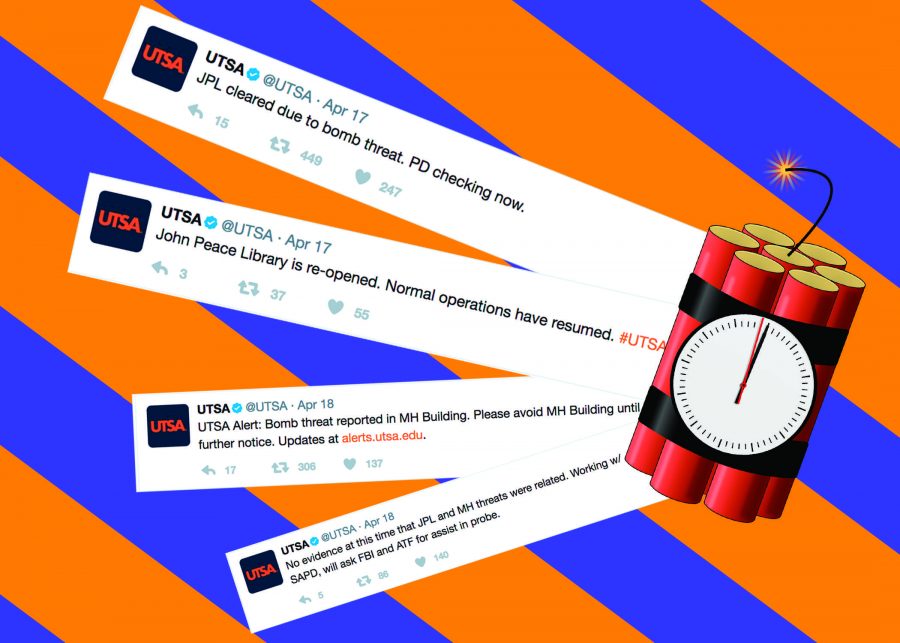On Mon. April 17, students, faculty and staff were evacuated from the John Peace Library (JPL) due to a bomb threat.
“An officer came in. He called for everyone’s attention and then to exit the building through the back,” Precious Rayfield, library staff and health major said, “We were just like is this a joke?’ But everybody grabbed their stuff and left.”
According to Rayfield, students gathered in the Sombrilla until directed to move further away from the building by UTSAPD.
“There was a non-specific bomb threat,” Chief of Police and Associate Vice President of Public Safety at UTSA Chief Gerald Lewis Jr. said. “Our officers responded. We evacuated the building, we did a search not only with the UTSAPD but with the SAPD. We didn’t find anything so as a result we repopulated the building.”
On Tues. April 18, less than 24 hours after the first bomb threat disrupted UTSA, another one forced students and staff out of their routine schedule, this time at the Mckinney Humanities building.
“There was apparently a bomb threat called in, and in the middle of a class, the fire alarm rang, and we were escorted out of the building,” said Tess Orich, a senior cybersecurity major at UTSA.
Many students got a UTSA alert about avoiding the MH.
Although both of the bomb threats were “not credible,” UTSA is not taking the threats lightly. According to Joe Izbrand, UTSA’s chief communications officer, “these incidents disrupt the education of our students, and that is unacceptable to them and to us. We are working closely with the San Antonio Police Department and have also engaged with the FBI, to identify anyone who may be associated with these incidents.”
Izbrand added, “UTSA maintains a significant police presence that includes officers in and out of uniform, and there are extensive safety protocols in place across our campuses to protect our students, faculty and staff and visitors.”
In his email to the UTSA community, Acting President Pedro Reyes assured the community that UTSA’s “first obligation to you is to provide a safe campus.”
According to an Educator’s School Safety Network study of bomb threats targeting educational institutions, the months of April, October. and September. have the highest rates of bomb threats.
“Due to the dramatic increase in threats in the spring of 2016, when 2015-2016 data is included, April is still the month with the most threats overall (an average 113 per day, 16 percent of all threats).” Higher education systems only experience one percent of the study’s recorded bomb threats
Due to ongoing police investigation, details of the incident cannot be discussed according to Izbrand, but to see a UTSA bomb threat checklist, visit utsa.edu/utsapd/Crime_Prevention/Bomb_Threat/index.html.









